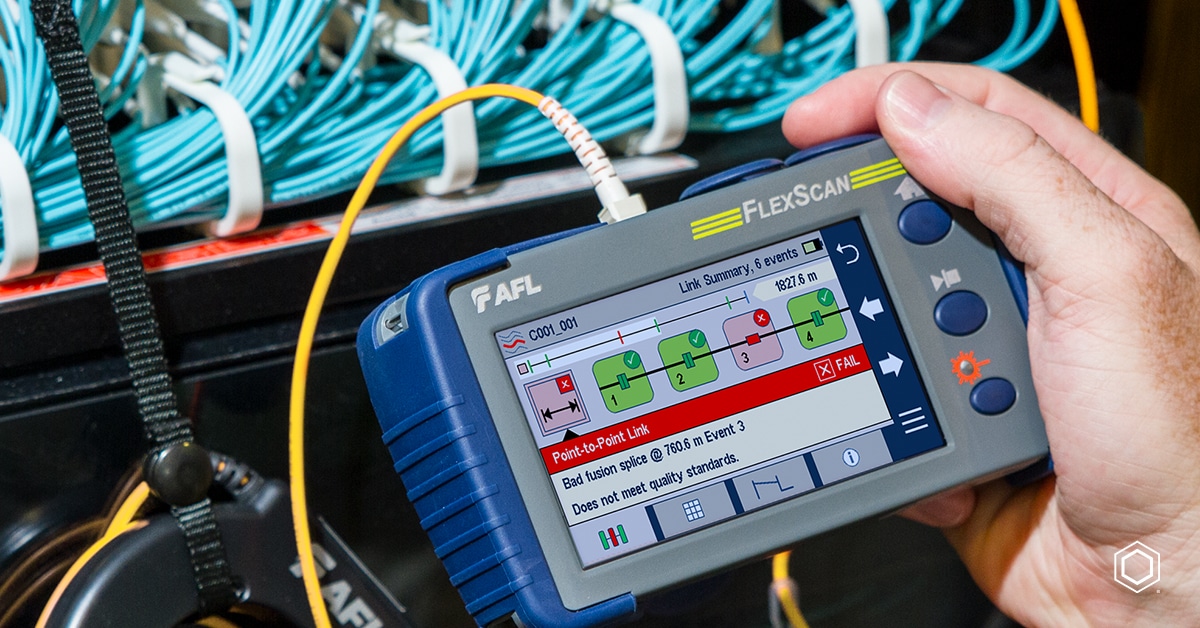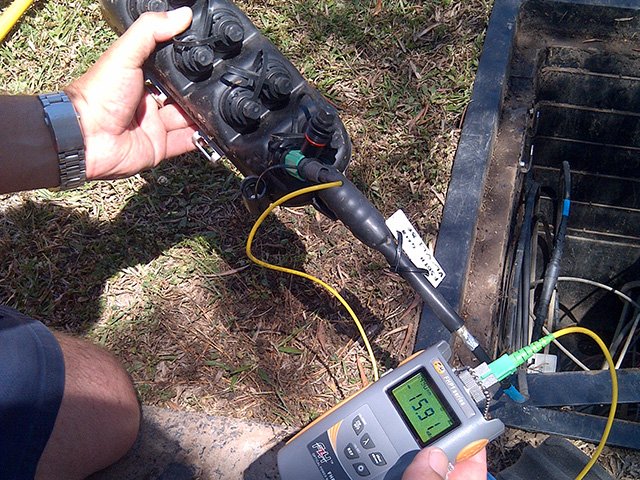The optical fibre diameter analyser delivers precise measurements for fibre optics.
The optical fibre diameter analyser delivers precise measurements for fibre optics.
Blog Article
Discover the Importance of Optical Fibre Screening in Modern Telecommunications
In the world of modern-day telecoms, the significance of optical fiber testing can not be overemphasized, as it functions as the foundation for making sure network integrity and performance. By applying regular screening methods, drivers can preemptively determine possible issues such as signal deterioration, hence safeguarding versus interruptions that could confirm costly. Advanced techniques like Optical Time-Domain Reflectometry play a critical duty in this process, yet several may overlook the broader effects of these methods. What are the specific benefits that regular testing deals, and exactly how might it form the future landscape of telecommunications?

Recognizing Optical Fibre Testing
Optical fiber screening is an important process in telecommunications that ensures the integrity and efficiency of fiber optic networks. This screening encompasses a variety of procedures developed to evaluate the physical and useful qualities of optical fibers - ofda. Secret criteria evaluated consist of optical power loss, bandwidth capacity, and fault location, which are necessary for preserving top quality interaction links
The testing procedure typically entails making use of specialized devices such as Optical Time-Domain Reflectometers (OTDR) and Optical Power Meters. OTDRs are utilized to identify and define faults, interlaces, and ports within the fiber, while power meters measure the transmitted light signal strength to establish performance.
Furthermore, screening is conducted at different phases, consisting of throughout installment, maintenance, and troubleshooting, to guarantee that the network satisfies sector requirements and operational needs. Compliance with requirements set by organizations like the International Telecommunication Union (ITU) and the Telecoms Sector Association (TIA) is extremely important.
Advantages of Regular Examining
Routine testing of optical fibers yields numerous advantages that substantially boost network dependability and efficiency. Among the main benefits is the very early discovery of potential problems, such as breaks or deterioration in the fibre, which can bring about costly downtime if left unaddressed (ofda). By identifying these problems proactively, telecoms carriers can minimize solution disruptions and make certain consistent connectivity for their customers
In addition, normal testing aids to keep the integrity of signal high quality. As optical fibres age, their efficiency can be influenced by elements such as ecological problems and physical stress. Routine evaluations enable for the monitoring of signal loss and total transmission effectiveness, making sure that the network operates at optimum levels.
One more substantial advantage is compliance with industry requirements. Normal screening supports adherence to regulative requirements, consequently minimizing legal and monetary risks related to non-compliance. In addition, it boosts the total life expectancy of the fiber infrastructure by promoting prompt repair and maintenance.

Typical Evaluating Methods
Evaluating optical fibers utilizes different methods to ensure the stability and efficiency of telecommunications networks. Among the most common strategies is Optical Time Domain Name Reflectometry (OTDR), which assesses the whole size of the fiber by sending a pulse of light and measuring the representations triggered by imperfections or breaks. This method offers in-depth information concerning the area and severity of mistakes.
An additional common technique is using Optical Power Meters, which determine the amount of light this article sent with the fibre. This strategy helps establish the loss of signal stamina, making certain that it fulfills market requirements. Furthermore, Aesthetic Fault Locators (VFL) are utilized to determine breaks or serious bends in the fiber by forecasting a visible laser light right into the wire.
Insertion loss screening is additionally crucial, as it evaluates the loss of signal power resulting from connections and interlaces within the network. Furthermore, making use of Polarization Mode Diffusion (PMD) testing assesses the impact of fibre features on signal honesty.
Each of these techniques plays a crucial role in keeping the performance and reliability of optical fibre networks, inevitably adding to seamless telecoms operations.
Effect On Network Efficiency
The honesty and performance of optical fibre networks directly influence overall network efficiency. In modern telecoms, the effectiveness of information transmission relies heavily on the high quality of the optical fibres used. next page Any deterioration in the fibre's condition-- whether as a result of physical damages, contamination, or extreme bending-- can lead to raised depletion and signal loss, dramatically affecting data stability and rate.
Routine optical fiber testing is important to recognize and fix potential concerns before they manifest as network failures or slowdowns. Techniques such as Optical Time Domain Name Reflectometry (OTDR) and insertion loss testing make it possible for professionals to measure the performance of fibre links precisely. These examinations not only examine the physical problem of the fibres but also make certain conformity with sector criteria, thereby protecting the network's reliability.
Additionally, a well-kept optical fibre network adds to minimized functional costs and enhanced consumer satisfaction, as end-users experience less disturbances and greater data prices. Eventually, the emphasis on rigorous optical fiber testing methods works as a cornerstone for sustaining durable telecommunications infrastructure, ensuring that service carriers can satisfy the growing demands for data transfer and connection in today's electronic age.
Future Trends in Testing
As we look ahead, developments in innovation are positioned to reshape optical fibre testing in telecoms. The surge of automation and man-made intelligence (AI) is anticipated to enhance the performance and accuracy of testing processes. Automated testing systems can conduct comprehensive analyses with minimal human treatment, dramatically lowering the possibility for errors and accelerating time-to-deployment.
Furthermore, the assimilation of equipment learning algorithms will certainly enable anticipating maintenance, permitting network service providers to visualize possible problems before they rise right into failures. This proactive technique not only improves network reliability but also optimizes operational costs.
An additional emerging pattern is the growth of mobile screening devices that use real-time analysis - fibre testing equipment. These devices will certainly equip specialists to carry out on-site diagnostics swiftly, promoting quicker resolutions and boosting service top quality
The development i was reading this of 5G networks even more requires the advancement of testing methods. As bandwidth needs raise, traditional screening methods may no much longer suffice. Ingenious services such as optical time-domain reflectometry (OTDR) and progressed spectral analysis will end up being critical in guaranteeing the integrity and performance of high-speed links.

Final Thought
Finally, optical fibre screening is important for making sure the stability and integrity of modern telecommunications networks. Routine testing practices not only help determine possible problems such as signal loss and faults but also add to boosted network performance and customer fulfillment. As the need for seamless connectivity proceeds to grow, the adoption of innovative screening methods will play an essential duty in maintaining high-grade network requirements and supporting the advancing landscape of telecoms.
Report this page